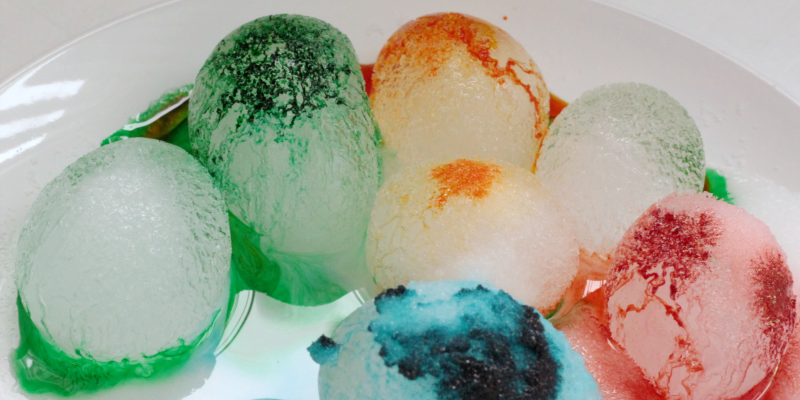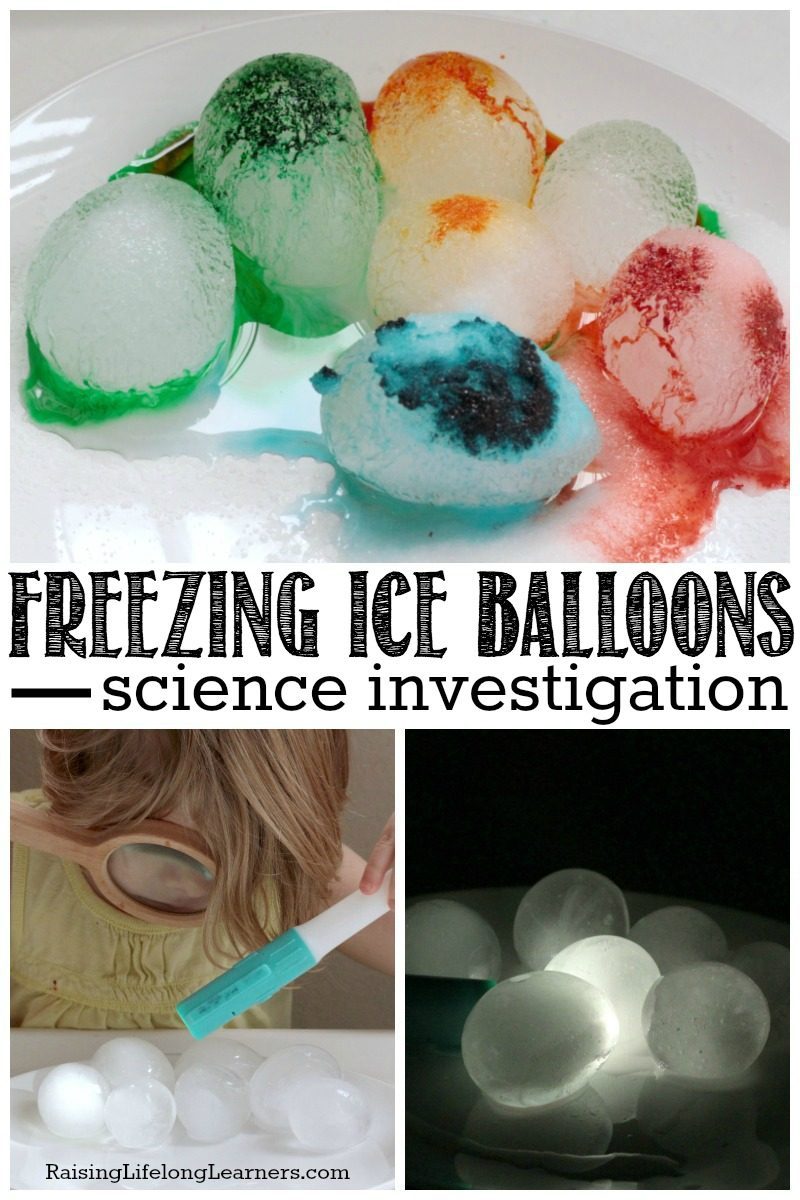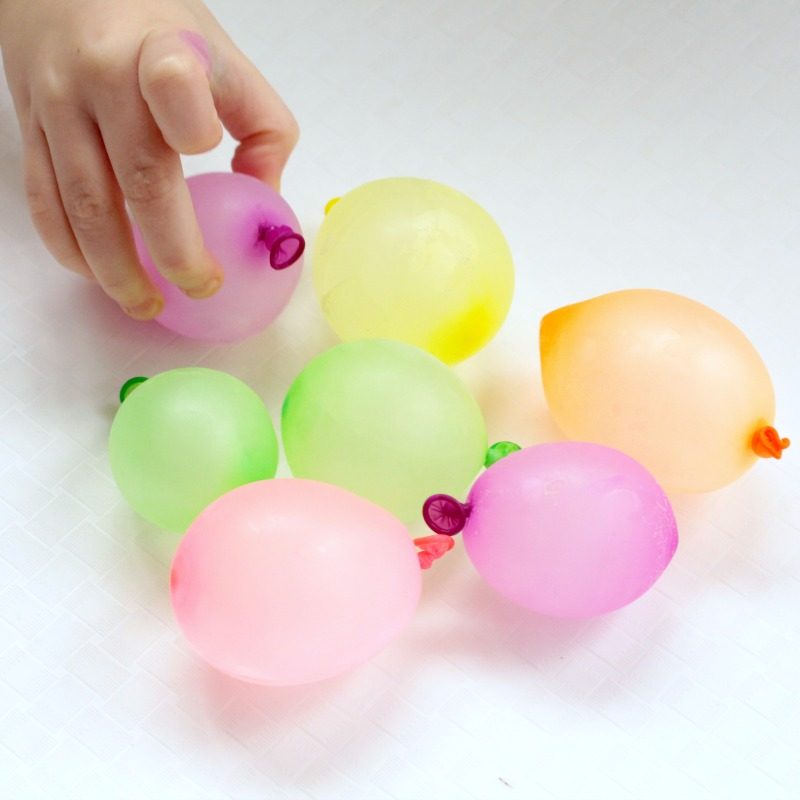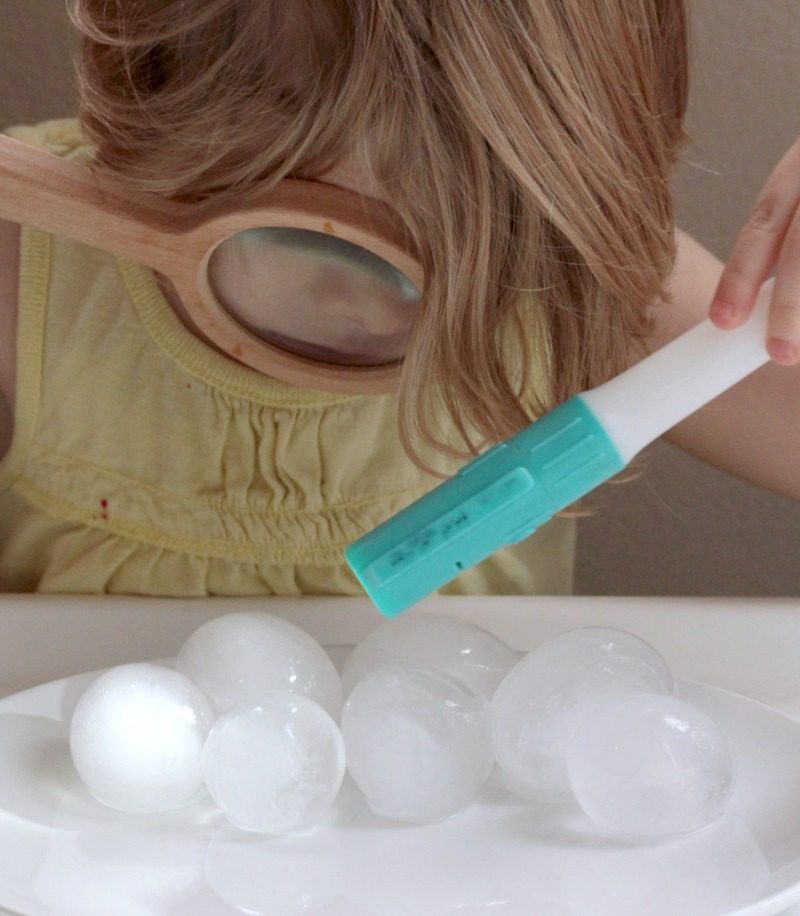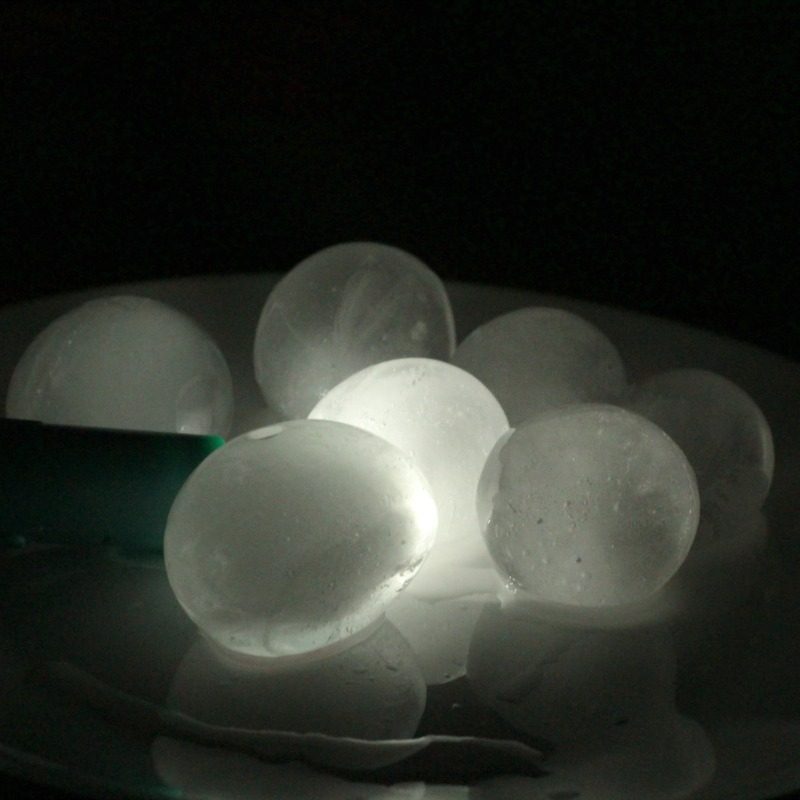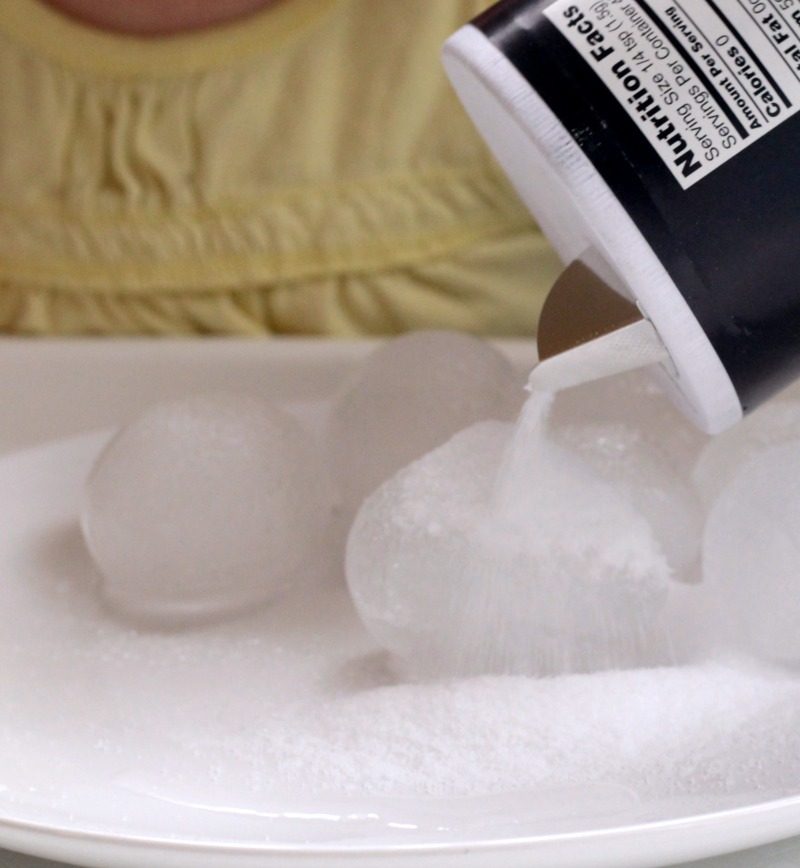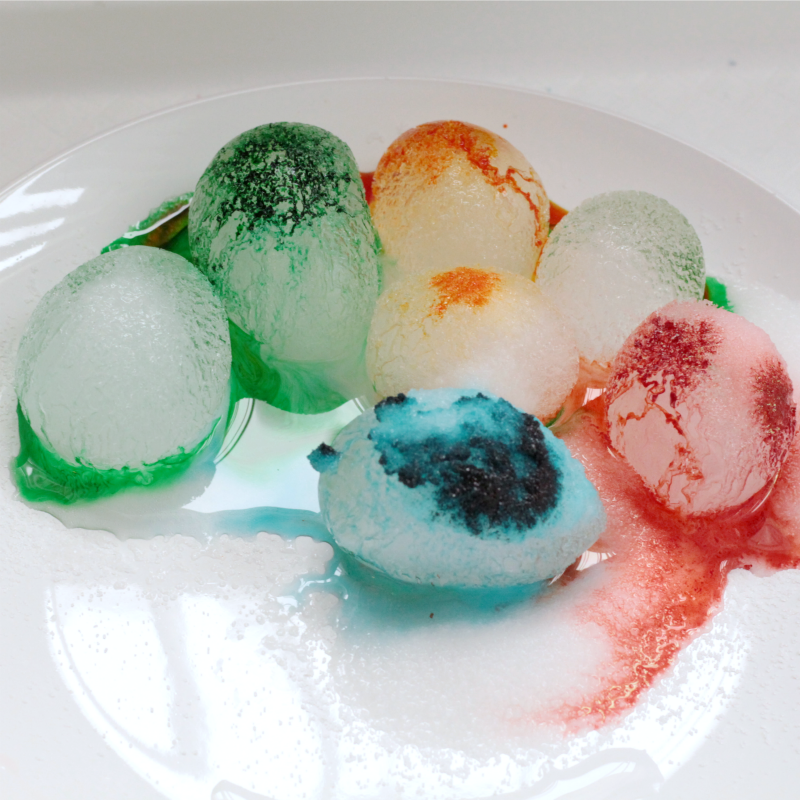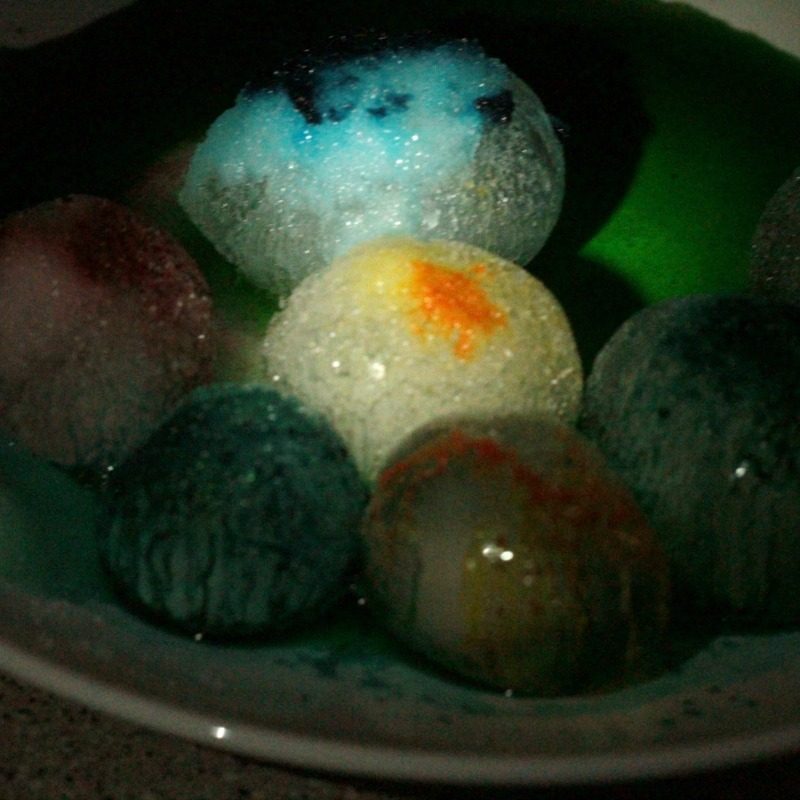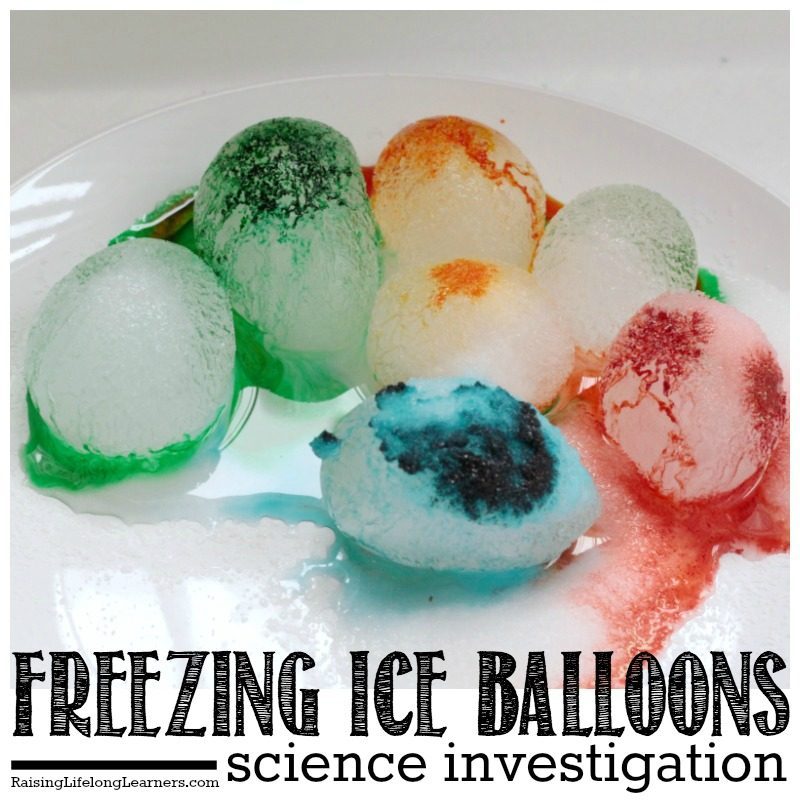Freezing Ice Balloons Science Investigation
With temperatures below freezing, the choice is to stay inside or outside. We did a mix of both with this fun project! We used the freezing temperatures outdoors to freeze some ice balloons and then brought them inside for scientific discovery.
You can do this investigation with kids from preschool through upper elementary. With older kids, you can discuss more of the science, such as why salt lowers the melting point of ice or how cold ice needs to be to freeze solid. But younger kids will just have a blast exploring ice and watching it melt slowly (or quickly if you add it to a cup of warm water).
Freezing Ice Balloons Science Investigation
This is the perfect science investigation for preschoolers and kindergartners. But older kids will have fun with this, too!
You’ll need just a few things for this project:
Before getting started, fill your balloons with water and freeze the day before. If you live in a cold climate, put the balloons outside to freeze. If not, just put them in the freezer.
The next day, cut the balloons off the ice and start investigating!
First, we explored the ice with a magnifying glass and flashlight. It was neat to see the variations in the ice under the light.
We looked at the ice in the dark, too.
Next, we added salt. The ice started to melt quickly!
Finally, we added just a drop of food coloring to each ice ball. The food coloring really showed how the salt was melting the ice.
We looked at the ice in the dark as well. My preschooler was fascinated by it all.
Ice Science Explained
When drops of water are added to an ice ball, the ice is cold enough to freeze the drop. But when a lot of water is added, the ice starts to melt.
When you add salt to ice, it starts to melt faster because salt lowers the temperature at which ice can melt.
Adding food coloring to the salted ice shows just how fast the salt melts the ice.
What other ideas do you have for investigating ice balloons with your kiddos? Share here.
More fun science for kids:
&

